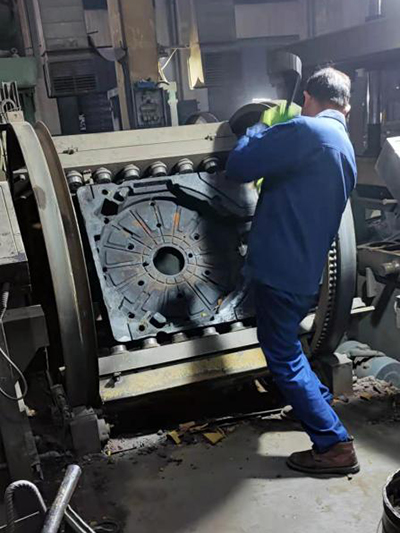Understanding Foundry Sand Prices Key Factors and Trends
Foundry sand plays a crucial role in the metal casting industry, serving as a primary molding material that allows for the production of intricate and high-quality metal pieces. The price of foundry sand is influenced by a variety of factors, including raw material costs, demand and supply dynamics, regional variations, and technological advancements. Understanding these elements is essential for manufacturers, suppliers, and buyers looking to navigate the marketplace effectively.
What is Foundry Sand?
Foundry sand, typically composed of silica, is used in the casting process, where molten metal is poured into a mold to create metal components. The properties of foundry sand, such as grain size, shape, and surface characteristics, significantly affect the quality of the cast and, consequently, the overall performance of the finished product. The most commonly used types of foundry sand include green sand, resin-coated sand, and chemically bonded sand, each with varying cost implications.
Factors Influencing Foundry Sand Prices
1. Raw Material Costs The primary component of foundry sand is silica, mined from the earth. Fluctuations in mining costs, transportation, and processing can directly impact the price of foundry sand. For instance, an increase in fuel prices can elevate transportation costs, consequently affecting the overall sand pricing.
2. Supply and Demand Dynamics The foundry industry can be cyclical, heavily depending on the manufacturing sector's performance. A surge in automotive or aerospace production, for instance, leads to increased demand for casting, thereby driving up foundry sand prices. Conversely, during economic downturns, a reduction in manufacturing activity may result in a surplus of foundry sand and lower prices.
3. Geographical Variations Prices for foundry sand can vary significantly by region, influenced by local sourcing costs, availability of raw materials, and competitive market factors. Areas with abundant silica deposits may experience lower prices due to easier access to raw material, while regions reliant on imported sand may face higher costs.
foundry sand price

4. Technological Advancements Innovations in sand processing and reclamation techniques can affect the cost structure of foundry sand. For instance, advancements that allow for the reuse and recycling of sand can lower overall demand for new sand, stabilizing or even reducing prices over time. Manufacturers who adopt these technologies may benefit from reduced material costs, making them more competitive in the market.
5. Environmental Regulations Stricter environmental regulations related to the mining and processing of silica can lead to increased operational costs for suppliers, which may be reflected in the pricing of foundry sand. Companies that invest in eco-friendly practices may incur higher initial costs but could also appeal to environmentally conscious customers.
Trends in Foundry Sand Pricing
In recent years, the market for foundry sand has witnessed notable trends. As the automotive and aerospace industries continue to grow, particularly with the rise of electric vehicles and lightweight components, there is a sustained demand for high-quality foundry sand. Moreover, the global shift towards sustainability has encouraged investment in sand reclamation technologies, aiming to reduce waste and lower costs in the long run.
The COVID-19 pandemic also disrupted supply chains, leading to short-term fluctuations in pricing. As industries recover, the pricing dynamics will likely stabilize, although the ongoing challenges of global trade and supply chain disruptions may continue to influence prices in the near future.
Conclusion
Ultimately, understanding the factors influencing foundry sand prices is paramount for stakeholders in the metal casting industry. By staying informed about market trends, technological advancements, and environmental regulations, manufacturers and suppliers can make strategic decisions that enhance their competitiveness and profitability in a rapidly changing landscape. As global demands evolve, so too will the dynamics of foundry sand pricing, making it essential for industry participants to remain agile and responsive to market conditions.
Post time:డిసెం . 24, 2024 11:37
Next:sand casting factory
